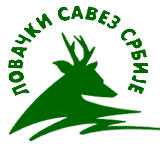
The Common Buzzard (Buteo buteo) is a medium to large bird of prey, whose range covers most of Europe and extends into Asia. It is typically between 51-57 cm in length with a 110 to 130 cm (48-60 inch) wingspan, making it a medium-sized raptor. There are around 40,000 breeding pairs in Britain. It is usually resident all year except in the coldest parts of its range, and in the case of one subspecies. It breeds in woodland, usually on the fringes, but favours hunting over open land. It eats mainly small mammals, and will come to carrion. A great opportunist, it adapts well to a varied diet of pheasant, rabbit, other small mammals, snakes and lizards and can often be seen walking over recently ploughed fields looking for worms and insects. Buzzards do not normally form flocks, but several may be seen together on migration or in good habitat. The Victorian writer on Dartmoor, William Crossing, noted that he had on occasions seen flocks of 15 or more at some places. Though a rare occurrence as many as 20 buzzards can been spotted in one field area, approx 30 meters apart, so cannot be classed as a flock in the general term, consisting of those males (and females) without a mate or territory. They are fiercely territorial, and, though rare, fights do break out if one strays on another pair's territory, but dominant displays of aggression will normally see off the interloper. Pairs mate for life. To attract a mate (or impress his existing mate) the male performs a ritual aerial display before the beginning of Spring. This spectacular display is known as 'the roller coaster'. He will rise high up in the sky, to turn and plummet downward, in a spiral, twisting and turning as he comes down. To then rise immediately upward to repeat the exercise. This broad-winged raptor has a wide variety of plumages, and in Europe can be confused with the similar Rough-legged Buzzard (Buteo lagopus) and the only distantly related Honey Buzzard (Pernis apivorus), which mimics the Common Buzzard's plumage for a degree of protection from Goshawks. The plumage can vary in Britain from almost pure white to black, but is usually shades of brown, with a pale 'necklace' of feathers.








